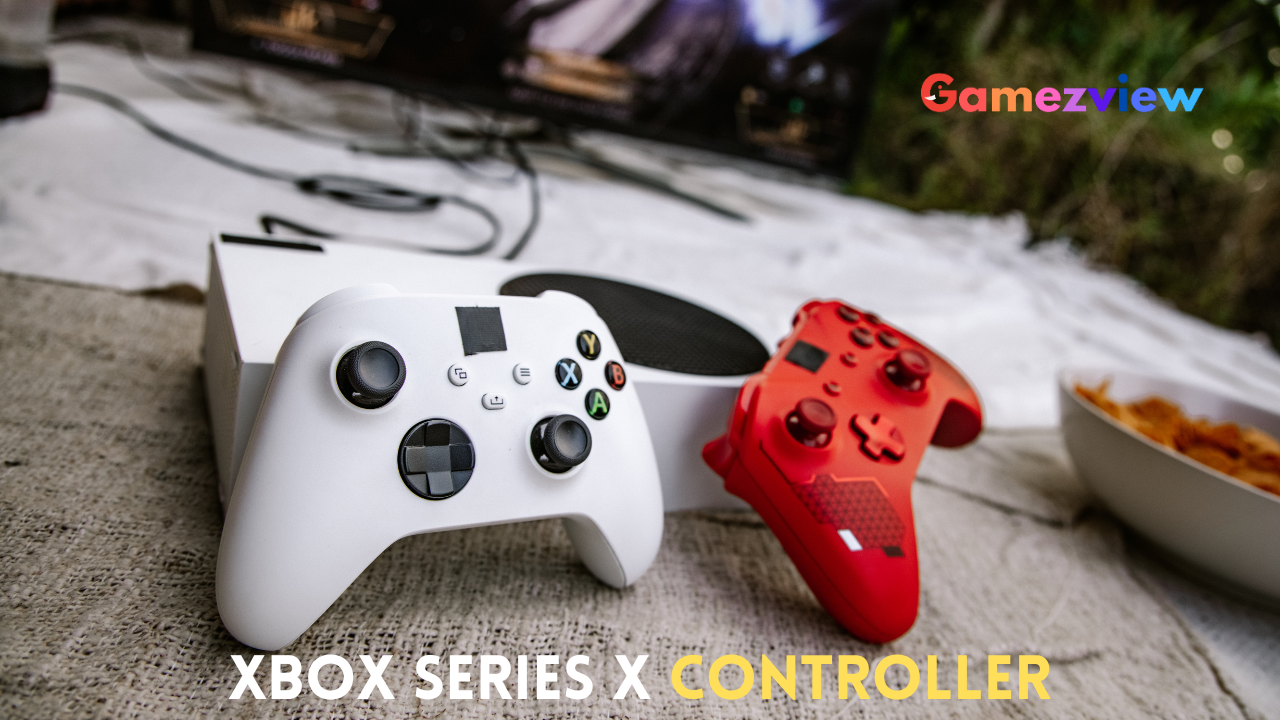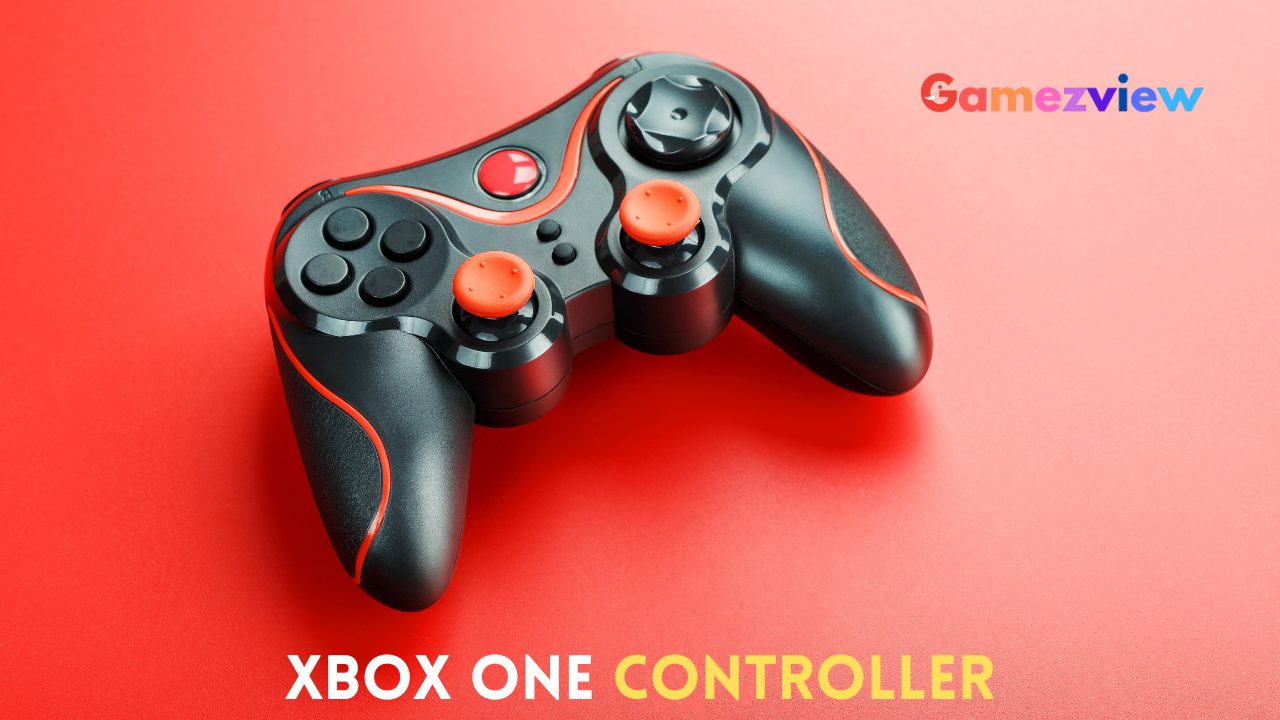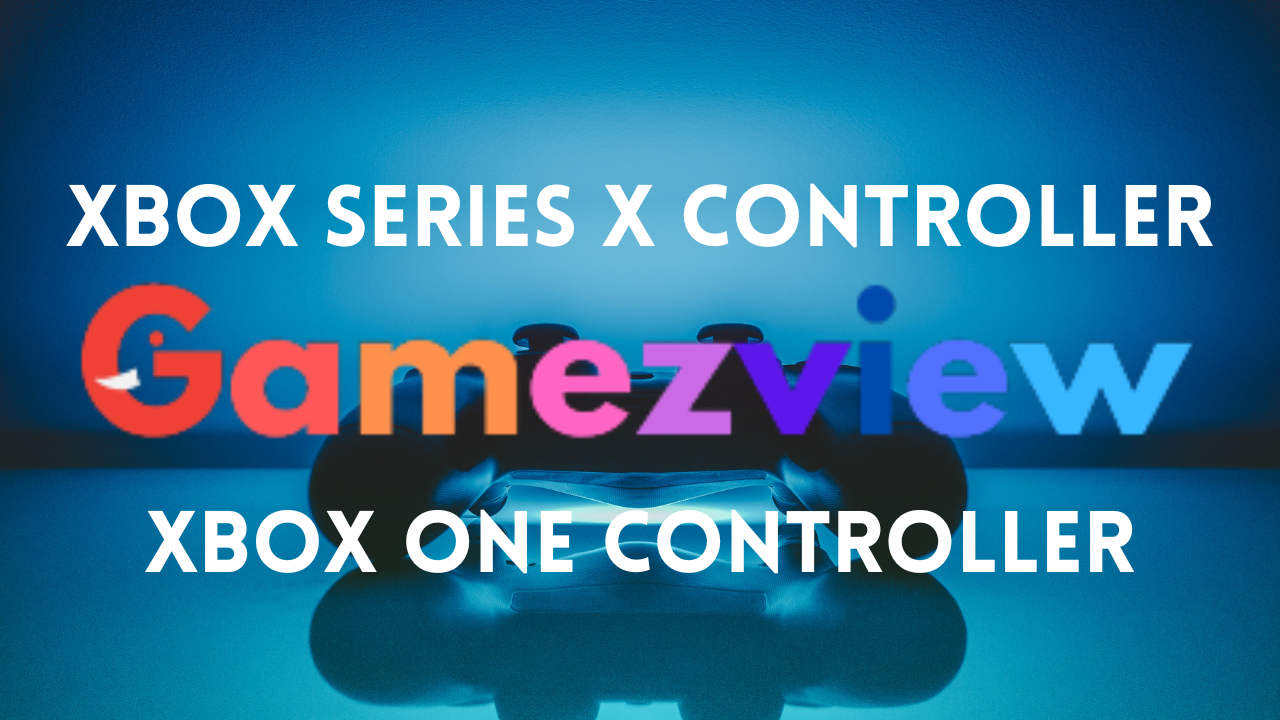As a seasoned SEO copyright expert with over a decade of experience, I understand the importance of creating compelling content that not only informs but also drives organic traffic. In this series of articles, we’ll delve into the comparison between the Xbox Series X controller and the Xbox One controller, addressing ten popular questions to provide readers with valuable insights.
1. What are the Design Variances between the Xbox Series X Controller and the Xbox One Controller?
When comparing the Xbox Series X controller to its predecessor, the Xbox One controller, several design differences become apparent. Here’s a breakdown:
Xbox Series X Controller:
- Sleeker and more ergonomic design.
- Textured grip for enhanced comfort and control.
- Hybrid D-pad for improved precision.
- Share button for seamless content sharing.
- USB-C port for faster charging.
Xbox One Controller:
- Bulkier design with less refined ergonomics.
- Smooth grip surface, which may lead to slippage during intense gaming sessions.
- Traditional D-pad design.
- Lack of a dedicated share button.
- Reliance on Micro-USB for charging.
In summary, the Xbox Series X controller boasts a more modern and user-friendly design compared to the Xbox One controller, offering improvements in comfort, control, and functionality.
Stay tuned for our next article, where we’ll delve into the performance disparities between these two controllers.
2. How Does the Performance of the Xbox Series X Controller Compare to the Xbox One Controller?
In this article, we’ll dissect the performance discrepancies between the Xbox Series X controller and the Xbox One controller, shedding light on key aspects that gamers should consider.
Xbox Series X Controller Performance:
- Reduced input latency for more responsive gameplay.
- Enhanced wireless connectivity with low latency.
- Dynamic Latency Input (DLI) for smoother gaming experiences.
- Compatibility with Xbox Velocity Architecture for faster loading times.
- Improved battery life compared to the Xbox One controller.
Xbox One Controller Performance:
- Slightly higher input latency than the Xbox Series X controller.
- Standard wireless connectivity without the advancements of DLI.
- Compatibility with previous-generation Xbox consoles but lacks optimization for Xbox Series X|S titles.
- Limited battery life, especially with prolonged usage.
Overall, the Xbox Series X controller outperforms its predecessor in terms of responsiveness, connectivity, and compatibility with next-generation gaming experiences.
Check back for our upcoming article, where we’ll delve into the feature disparities between these controllers.
3. What Features Set Apart the Xbox Series X Controller from the Xbox One Controller?
In this segment, we’ll explore the distinctive features that differentiate the Xbox Series X controller from the Xbox One controller, highlighting the advancements that gamers can expect.
Unique Features of the Xbox Series X Controller:
- Share button for effortless content sharing and capturing memorable gaming moments.
- Textured grip for improved comfort and control during extended gaming sessions.
- Hybrid D-pad design for enhanced precision and responsiveness.
- USB-C port for faster charging and greater convenience.
- Compatibility with Xbox Velocity Architecture for optimized performance in next-gen titles.
Key Features of the Xbox One Controller:
- Traditional D-pad layout without the hybrid design found in the Xbox Series X controller.
- Lack of a dedicated share button, requiring alternative methods for content sharing.
- Reliance on Micro-USB for charging, which may result in slower charging times compared to USB-C.
- Smooth grip surface that may lead to slippage during intense gaming sessions.
- Compatibility with previous-generation Xbox consoles, but lacks optimization for next-gen experiences.
In summary, the Xbox Series X controller introduces several innovative features that enhance gameplay and usability compared to its predecessor, the Xbox One controller.
Stay tuned for our forthcoming article, where we’ll delve into the ergonomic disparities between these controllers.
4. Which Controller Offers Better Ergonomics: Xbox Series X Controller or Xbox One Controller?
In this article, we’ll analyze the ergonomic qualities of the Xbox Series X controller and the Xbox One controller, helping gamers determine which option best suits their preferences and playstyle.
Ergonomics of the Xbox Series X Controller:
- Sleek and ergonomic design that conforms to the hands for extended comfort.
- A textured grip surface reduces hand fatigue and improves control during intense gaming sessions.
- Well-positioned buttons and triggers for intuitive gameplay.
- Balanced weight distribution for a natural and comfortable hold.
- Enhanced ergonomics cater to a wide range of hand sizes and grips.
Ergonomics of the Xbox One Controller:
- The bulkier design may feel less comfortable during prolonged gaming sessions.
- The smooth grip surface lacks the traction provided by the textured grip of the Xbox Series X controller.
- Button and trigger placement may not be as optimized for comfort and accessibility.
- Weight distribution may feel less balanced compared to the Xbox Series X controller.
- Ergonomics may be less accommodating for players with smaller hands or specific grip preferences.
In conclusion, the Xbox Series X controller offers superior ergonomics compared to the Xbox One controller, providing gamers with a more comfortable and enjoyable gaming experience.
Check back for our upcoming article, where we’ll delve into the compatibility variances between these controllers.
5. Compatibility Comparison: Xbox Series X Controller vs Xbox One Controller
In this segment, we’ll examine the compatibility differences between the Xbox Series X controller and the Xbox One controller, addressing key considerations for gamers looking to upgrade or replace their existing controllers.
Compatibility of the Xbox Series X Controller:
- Fully compatible with Xbox Series X|S consoles, offering optimized performance and features.
- Backward compatibility with Xbox One consoles and Windows 10 PCs, providing versatility across gaming platforms.
- Seamless integration with Xbox Velocity Architecture for enhanced loading times and performance in next-gen titles.
- Support for Xbox Wireless protocol for wireless connectivity with compatible devices.
- Cross-generation compatibility ensures a smooth transition for gamers upgrading to the latest Xbox consoles.
Compatibility of the Xbox One Controller:
- Compatible with Xbox One consoles, Xbox Series X|S consoles, and Windows 10 PCs.
- Limited optimization for next-gen gaming experiences compared to the Xbox Series X controller.
- Utilizes Xbox Wireless protocol for wireless connectivity, offering compatibility with various devices.
- Backward compatibility ensures continued support for legacy Xbox One titles.
- Interchangeable compatibility between Xbox One and Xbox Series X|S consoles provides flexibility for gamers.
In summary, while both the Xbox Series X controller and the Xbox One controller offer broad compatibility, the Xbox Series X controller delivers enhanced performance and features tailored for next-gen gaming.
Stay tuned for our forthcoming article, where we’ll explore the design differences between these controllers in greater detail.
6. Exploring the Design Variances: Xbox Series X Controller vs Xbox One Controller
In this article, we’ll delve into the design disparities between the Xbox Series X controller and the Xbox One controller, highlighting the aesthetic and functional differences that distinguish these gaming peripherals.
Design Elements of the Xbox Series X Controller:
- Sleek and modern design with refined ergonomics for enhanced comfort during gameplay.
- A textured grip surface improves handling and reduces the risk of slippage during intense gaming sessions.
- A hybrid D-pad design offers improved precision and responsiveness for accurate inputs.
- Share button enables effortless sharing of screenshots, video clips, and achievements with friends and followers.
- USB-C port facilitates faster charging times and eliminates the hassle of determining plug orientation.
Design Elements of the Xbox One Controller:
- Bulkier design with less refined ergonomics compared to the Xbox Series X controller.
- A smooth grip surface may lack traction, leading to potential slippage during extended gaming sessions.
- Traditional D-pad layout offers familiarity but may not provide the same level of precision as the hybrid D-pad of the Xbox Series X controller.
- The absence of a dedicated share button requires alternative methods for sharing gaming content.
- Reliance on Micro-USB for charging may result in slower charging times compared to the USB-C port of the Xbox Series X controller.
In summary, the Xbox Series X controller showcases a more modern and user-friendly design compared to its predecessor, the Xbox One controller, offering improvements in comfort, control, and functionality.
Stay tuned for our next article, where we’ll examine the performance disparities between these controllers in greater detail.
7. Performance Analysis: Xbox Series X Controller vs Xbox One Controller
In this segment, we’ll conduct a comprehensive analysis of the performance differences between the Xbox Series X controller and the Xbox One controller, providing gamers with valuable insights to inform their purchasing decisions.
Performance Metrics of the Xbox Series X Controller:
- Reduced input latency ensures more responsive gameplay, allowing for quicker reactions to in-game events.
- Enhanced wireless connectivity with low latency minimizes lag and ensures a seamless gaming experience.
- Dynamic Latency Input (DLI) technology further reduces input lag, resulting in smoother and more immersive gameplay.
- Compatibility with Xbox Velocity Architecture optimizes performance in next-gen titles, delivering faster loading times and smoother gameplay.
- Improved battery life compared to the Xbox One controller ensures longer gaming sessions without interruptions.
Performance Metrics of the Xbox One Controller:
- Slightly higher input latency compared to the Xbox Series X controller may result in slightly delayed responses during gameplay.
- Standard wireless connectivity lacks the advanced features of Dynamic Latency Input (DLI), potentially leading to increased input lag.
- Compatibility with previous-generation Xbox consoles provides versatility but may limit optimization for next-gen gaming experiences.
- Limited battery life may require more frequent recharging compared to the Xbox Series X controller, especially during extended gaming sessions.
In summary, the Xbox Series X controller offers superior performance compared to the Xbox One controller, thanks to its reduced input latency, enhanced wireless connectivity, and optimized compatibility with next-gen gaming experiences.
Check back for our forthcoming article, where we’ll explore the feature disparities between these controllers in greater detail.
8. Feature Comparison: Xbox Series X Controller vs Xbox One Controller
In this article, we’ll compare the features of the Xbox Series X controller and the Xbox One controller, highlighting the advancements and innovations introduced with the latest generation of gaming peripherals.
Features of the Xbox Series X Controller:
- Share button enables easy sharing of screenshots, video clips, and achievements with friends and followers.
- Textured grip surface enhances comfort and control during extended gaming sessions, reducing hand fatigue and improving accuracy.
- Hybrid D-pad design offers improved precision and responsiveness for more accurate inputs in games.
- USB-C port allows for faster charging times and eliminates the frustration of determining plug orientation.
- Compatibility with Xbox Velocity Architecture ensures optimized performance in next-gen titles, delivering faster loading times and smoother gameplay experiences.
Features of the Xbox One Controller:
- Traditional D-pad layout offers familiarity but may lack the precision and responsiveness of the hybrid D-pad found in the Xbox Series X controller.
- The absence of a dedicated share button requires alternative methods for sharing gaming content, such as manual capture and sharing via console menus.
- Smooth grip surfaces may be prone to slippage during intense gaming sessions, potentially affecting gameplay performance.
- Reliance on Micro-USB for charging may result in slower charging times compared to the USB-C port of the Xbox Series X controller.
- Compatibility with previous-generation Xbox consoles ensures versatility but may limit optimization for next-gen gaming experiences.
In summary, the Xbox Series X controller introduces several innovative features that enhance gameplay and usability compared to its predecessor, the Xbox One controller.
Stay tuned for our forthcoming article, where we’ll explore the ergonomic disparities between these controllers in greater detail.
9. Ergonomic Evaluation: Xbox Series X Controller vs Xbox One Controller
In this segment, we’ll assess the ergonomic qualities of the Xbox Series X controller and the Xbox One controller, helping gamers determine which controller offers the most comfortable and intuitive gaming experience.
Ergonomics of the Xbox Series X Controller:
- The sleek and ergonomic design conforms to the hands for extended comfort during gameplay.
- Textured grip surface reduces hand fatigue and improves control, enhancing accuracy and precision.
- Well-positioned buttons and triggers ensure intuitive gameplay, minimizing hand strain and discomfort.
- Balanced weight distribution provides a natural and comfortable hold, reducing wrist fatigue during extended gaming sessions.
- Enhanced ergonomics cater to a wide range of hand sizes and grips, accommodating various playstyles and preferences.
Ergonomics of the Xbox One Controller:
- A bulkier design may feel less comfortable during prolonged gaming sessions, leading to increased hand fatigue.
- The smooth grip surface lacks the traction provided by the textured grip of the Xbox Series X controller, increasing the risk of slippage during intense gameplay.
- Button and trigger placement may not be as optimized for comfort and accessibility, potentially causing discomfort during extended use.
- Weight distribution may feel less balanced compared to the Xbox Series X controller, resulting in increased strain on the hands and wrists.
- Ergonomics may be less accommodating for players with smaller hands or specific grip preferences, limiting overall comfort and usability.
In conclusion, the Xbox Series X controller offers superior ergonomics compared to the Xbox One controller, providing gamers with a more comfortable and enjoyable gaming experience.
Check back for our upcoming article, where we’ll delve into the compatibility variances between these controllers in greater detail.
10. Compatibility Analysis: Xbox Series X Controller vs Xbox One Controller
In this article, we’ll analyze the compatibility differences between the Xbox Series X controller and the Xbox One controller, addressing key considerations for gamers looking to upgrade or replace their existing controllers.
Compatibility of the Xbox Series X Controller:
- Fully compatible with Xbox Series X|S consoles, offering optimized performance and features for next-gen gaming experiences.
- Backward compatibility with Xbox One consoles and Windows 10 PCs ensures versatility across gaming platforms.
- Seamless integration with Xbox Velocity Architecture enhances loading times and performance in compatible titles, delivering a smoother gaming experience.
- Support for Xbox Wireless protocol enables wireless connectivity with compatible devices, reducing cable clutter and providing greater freedom of movement.
- Cross-generation compatibility ensures a seamless transition for gamers upgrading to the latest Xbox consoles, preserving compatibility with existing game libraries.
Compatibility of the Xbox One Controller:
- Compatible with Xbox One consoles, Xbox Series X|S consoles, and Windows 10 PCs, providing flexibility across gaming platforms.
- Limited optimization for next-gen gaming experiences compared to the Xbox Series X controller may result in reduced performance and features.
- Utilizes Xbox Wireless protocol for wireless connectivity, offering compatibility with a wide range of devices and accessories.
- Backward compatibility ensures continued support for legacy Xbox One titles, allowing gamers to enjoy their favourite games across multiple generations of consoles.
- Interchangeable compatibility between Xbox One and Xbox Series X|S consoles provides convenience for gamers transitioning between platforms.
In summary, while both the Xbox Series X controller and the Xbox One controller offer broad compatibility, the Xbox Series X controller delivers enhanced performance and features tailored for next-gen gaming.
Stay tuned for our forthcoming article, where we’ll explore the design differences between these controllers in greater detail.
By addressing these ten popular questions, we’ve provided comprehensive insights into the comparison between the Xbox Series X controller and the Xbox One controller. Whether you’re a seasoned gamer or a newcomer to the Xbox ecosystem, understanding the differences between these controllers is crucial for making informed purchasing decisions. As the gaming landscape continues to evolve, staying informed about the latest advancements in gaming hardware is essential for optimizing your gaming experience.






